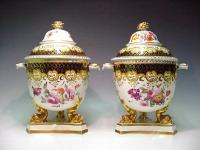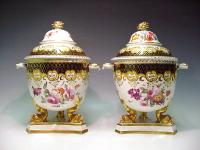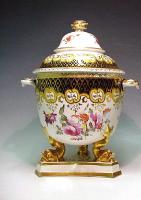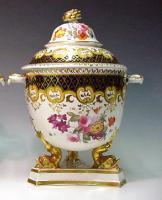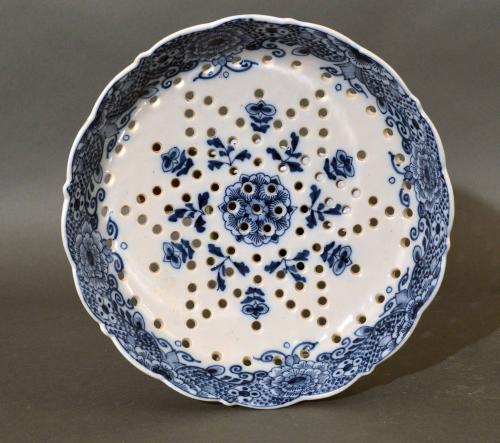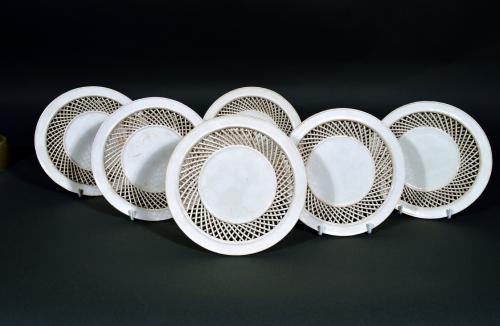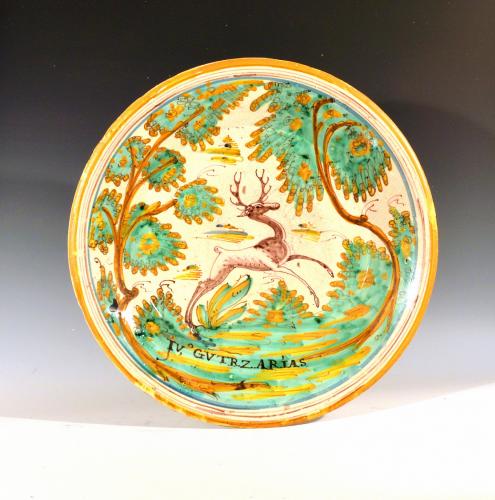
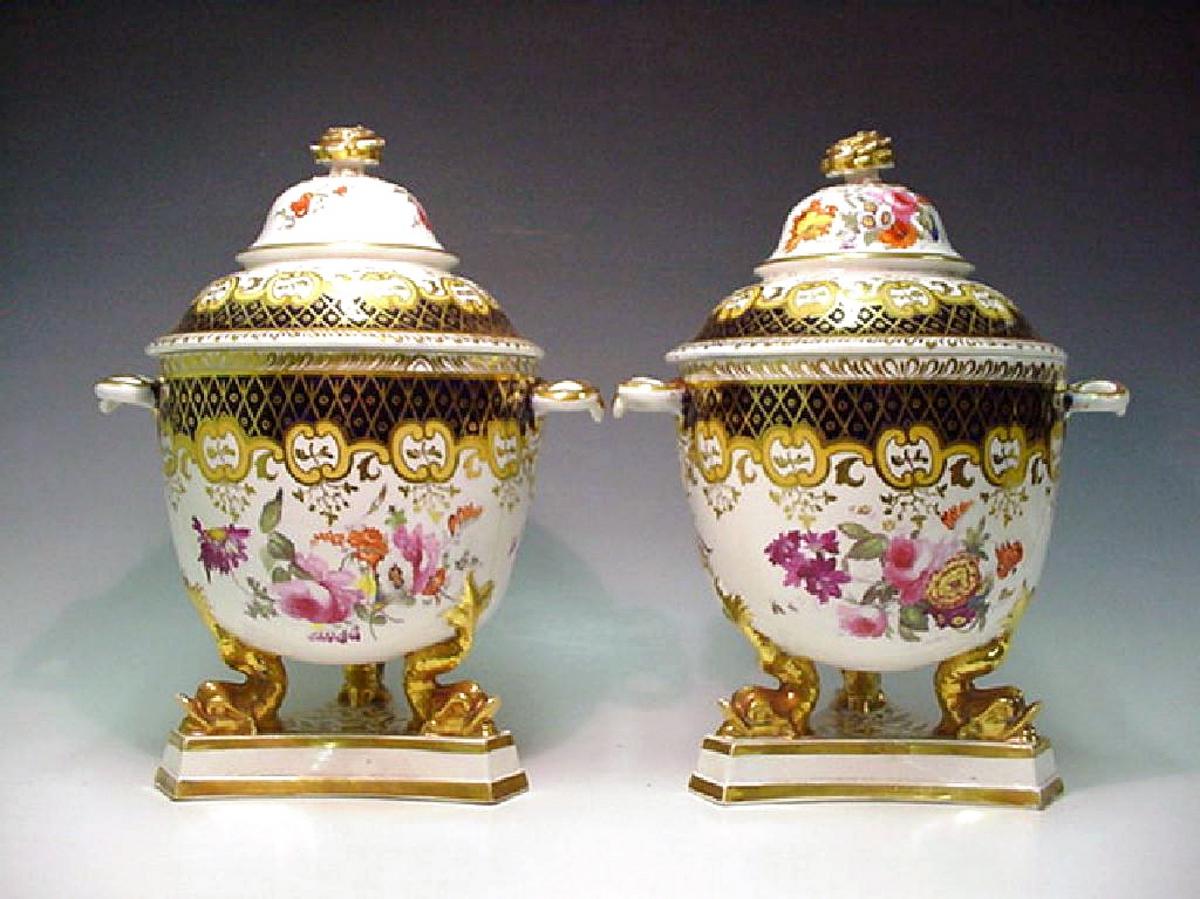
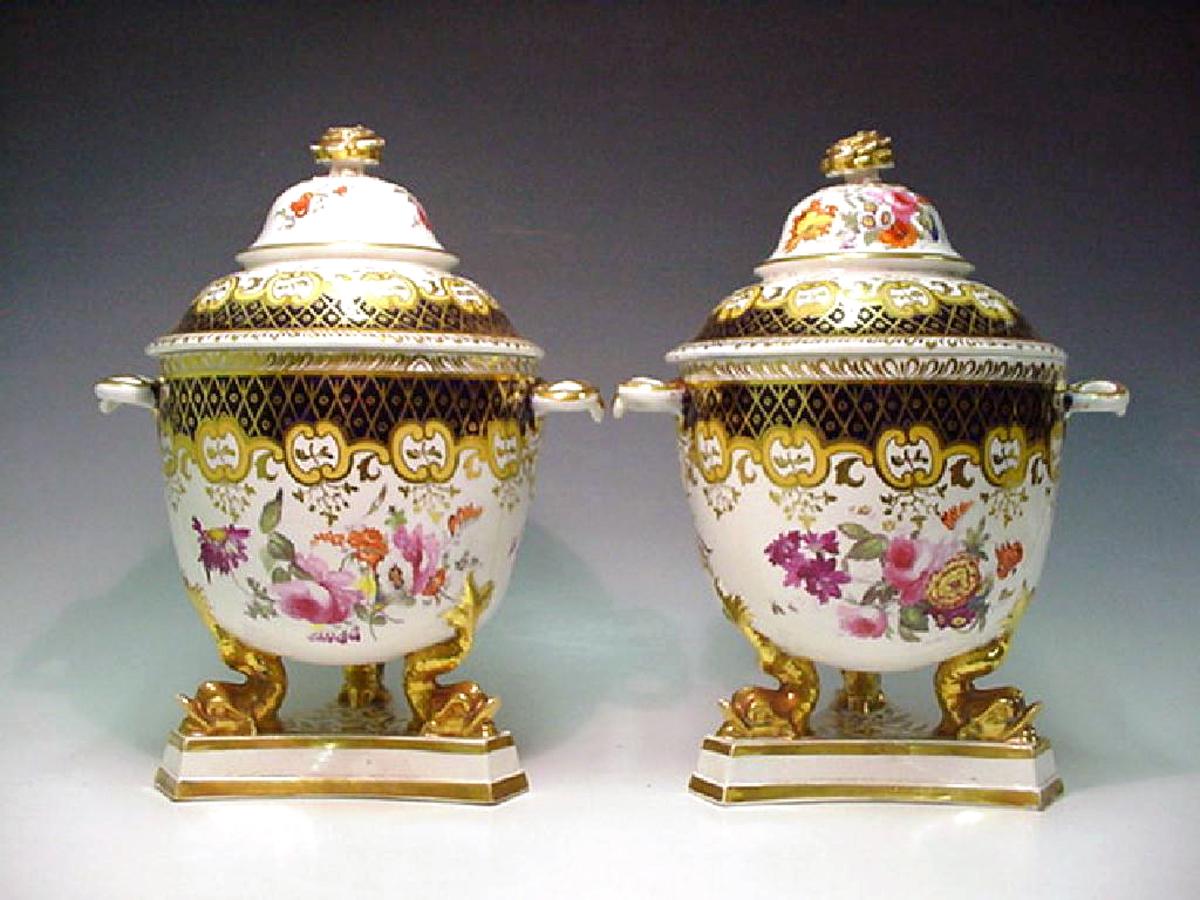
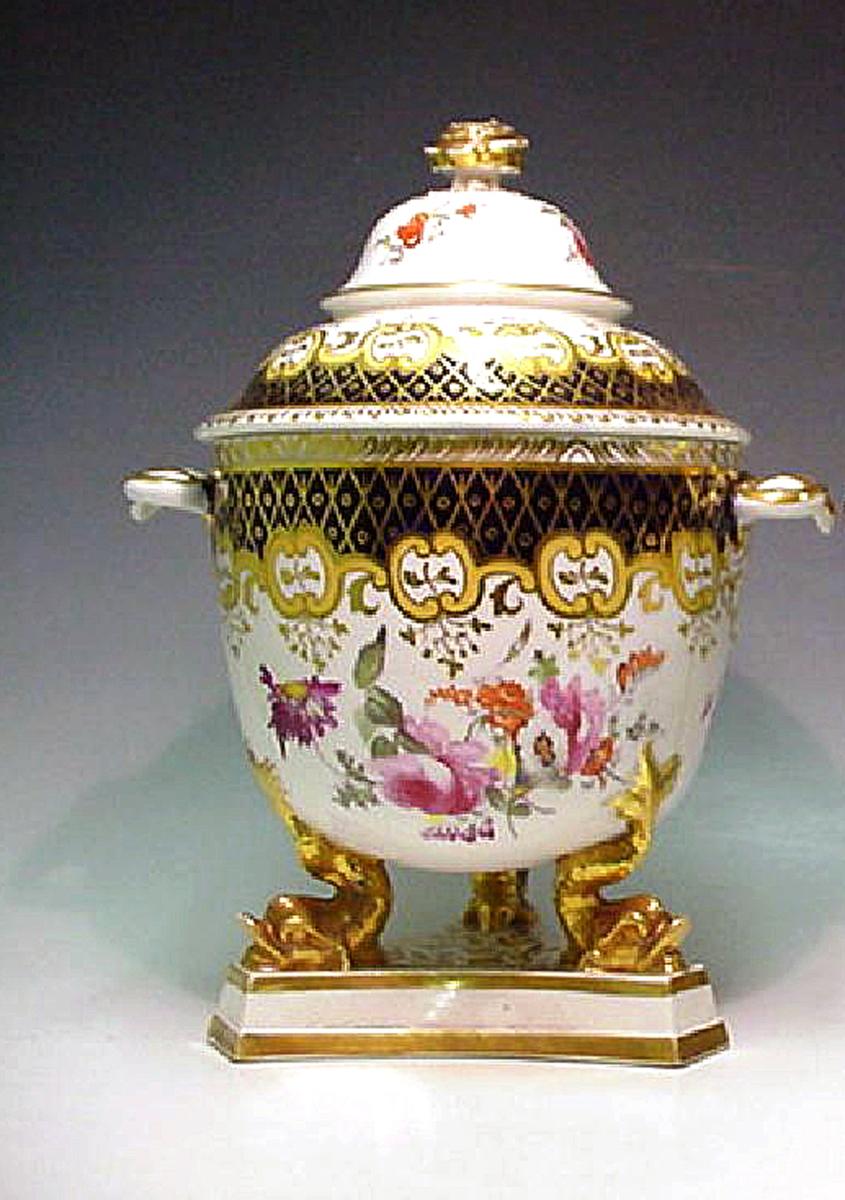
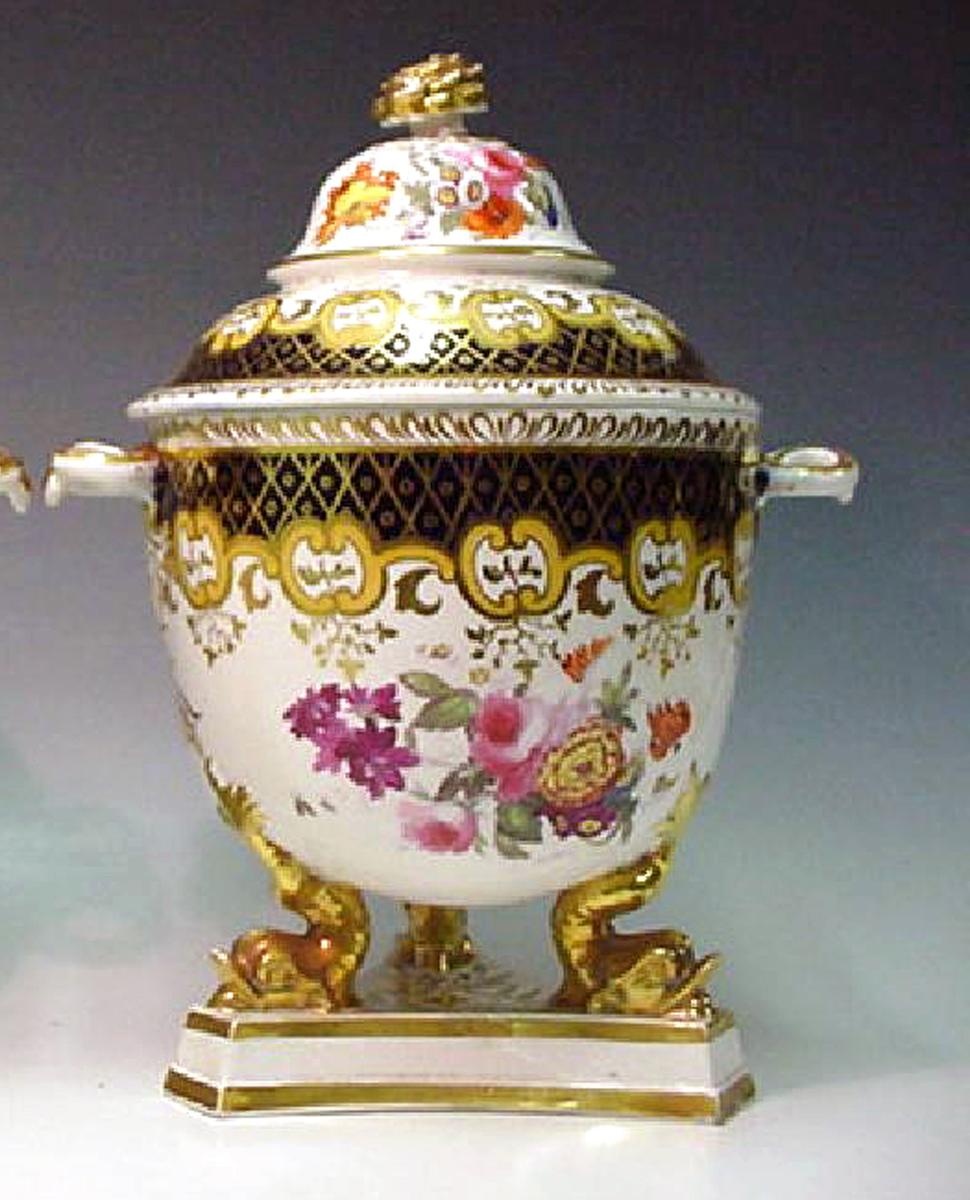
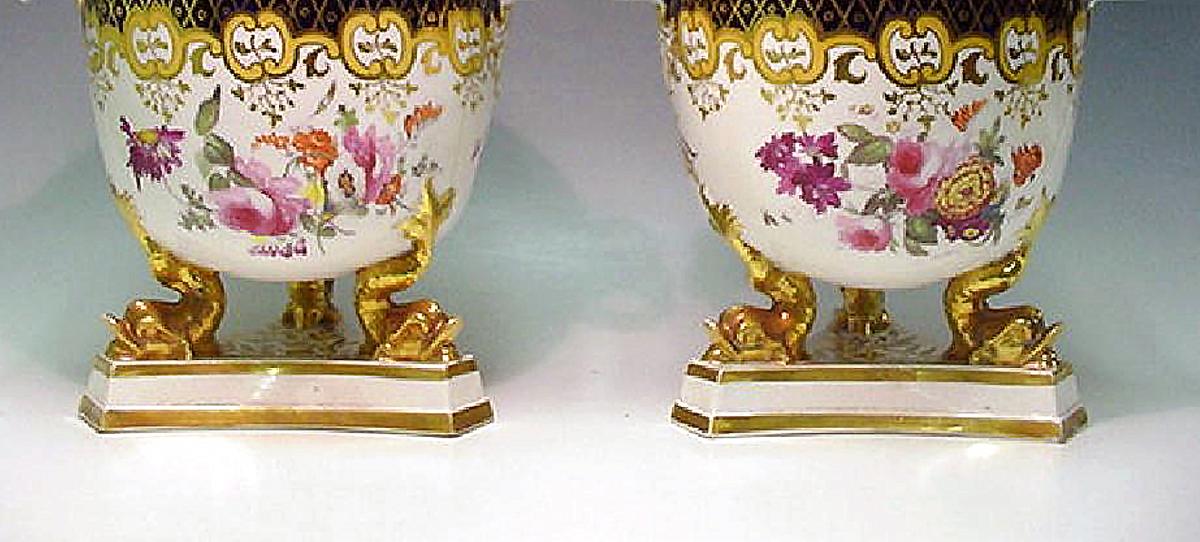
Price
£6000.00This object is eligible for a Certificate of BADA Provenance
The BADA Standard
- Since 1918, BADA has been the leading association for the antiques and fine art trade
- Members are elected for their knowledge, integrity and quality of stock
- Our clients are protected by BADA’s code of conduct
- Our dealers’ membership is reviewed and renewed annually
- Bada.org is a non-profit site: clients deal directly with members and they pay no hidden fees
Antique Ridgway Porcelain Pair of Fruit Coolers, Covers and Liners.
Circa 1820-25.
The pair of Ridgway porcelain coolers have a circular body raised on three dolphin feet and trefoil base. They are decorated with floral sprays under a blue band with gilt lattice decoration. Each side has a gilt ring handle.
The tall domed covers have flower finials and each cooler has a covered liner within. Some minor restoration to dolphins & hairline invisibly repaired.
Provenance: The Carter Collection, Australia. The Barry Bryne Collection, Australia. Delamosne, London.
Reference: Staffordshire Porcelain, Geoffrey Godden (Editor & main author), page#242, Colour plate IX, One of a pair of the fine quality Ridgway porcelain ice-pails of the type that were included in the more expensive dessert services.
The first record of ice cream in Britian is 1671 on the menu of a feast for the Knights of the Garter held in St. George's Hall at Windsor Castle. At this time it was considered such an exclusive dish that it appeared only on the king's table.
The earliest printed recipe appeared in Mrs Eale's Receipts, a work on confectionary which was published in London, 1718.
It was not until the second half of the 18th century that ices became more readily available from confectioner's shops, and these pails were commonly found on upper class homes' sideboards to be used for a dessert of ice cream with cut fruit.
If ice alone is used to fill the cover and the bucket, the ice cream melts very quickly. Although there is nothing recorded in literature, it is almost certain that a little salt was sprinkled on the ice.
Porcelain is the ideal material for ice cream pails as it is impervious to salt which improves the refrigerant effect. Experiments has shown that ice cream will remain in a frozen state for up to four hours in these ice pails if salt is added to both containers.
After a time, a small amount of ice eventually forms on the exterior of the pail - usually causing condensation, and possible adhesion to the table cloth.
It is therefore likely that these early pails would have been placed on a plate or stand. Later designs of these pails often had feet to prevent them freezing to the table, and these objects were rarely made beyond the year 1830.
Dimensions
13 1/2 in (34.2 cm).Stock number
NY05046The BADA Standard
- Since 1918, BADA has been the leading association for the antiques and fine art trade
- Members are elected for their knowledge, integrity and quality of stock
- Our clients are protected by BADA’s code of conduct
- Our dealers’ membership is reviewed and renewed annually
- Bada.org is a non-profit site: clients deal directly with members and they pay no hidden fees


